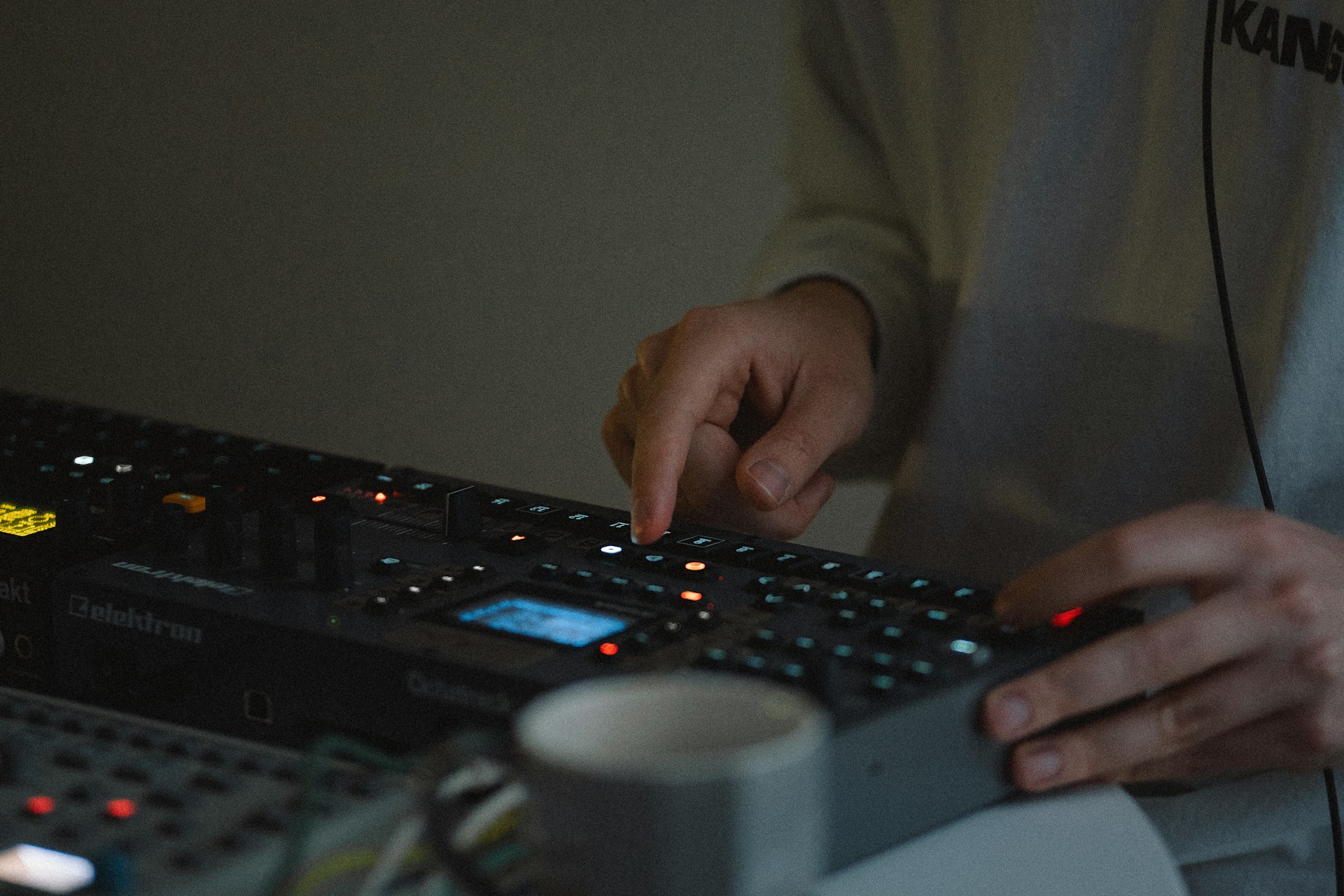
How to Recover Data from CCTV Hard Disk: An Expert’s Step-by-Step Guide
If you’ve ever walked into your DVR room and found your CCTV system saying “No Video File” or “HDD Not Detected,” you know that sinking feeling. All those hours of footage—possibly evidence or critical business data—seem gone in an instant.
Here’s the truth: in most cases, you can recover data from a CCTV hard disk, provided you take the right steps and avoid common mistakes.
I’ve been working with surveillance systems for over a decade, and I’ve helped dozens of clients—from small stores to corporate offices—retrieve lost CCTV footage successfully. In this guide, I’ll walk you through exactly how to recover your data safely, what tools you can use, and when it’s time to call a professional.
Let’s get started.
1. Why CCTV Hard Disk Data Gets Lost in the First Place
Before we fix the problem, it’s important to understand why it happens. Knowing the root cause helps you choose the right recovery method and avoid the same issue in the future.
Here are the most common reasons your CCTV hard disk loses data:
a) Power Surges or Outages
Sudden power loss during recording can corrupt the DVR’s file system, making stored video files unreadable.
b) Hard Disk Failure
CCTV hard disks work 24/7, often in warm environments. Over time, the constant read/write operations wear them out, causing bad sectors or mechanical issues.
c) Accidental Formatting
Many users accidentally click “Format” when trying to fix a “Disk Error” message. This erases the video index, though the data might still be recoverable.
d) DVR Software or Firmware Corruption
Sometimes, the DVR’s own operating system malfunctions, making it unable to read or recognize the hard disk.
e) Overwriting
Most CCTV systems automatically overwrite older footage when the drive is full. Unfortunately, once data is overwritten, it’s nearly impossible to recover.
Pro Tip: If you suspect your hard disk is failing, stop using it immediately. The more it runs, the higher the risk of permanent damage or overwriting critical data.
2. Signs That Your CCTV Hard Disk Needs Recovery
From my field experience, most people don’t realize their DVR has a problem until it’s too late. Here are the signs that your CCTV hard disk might be failing or corrupted:
-
The DVR says “No Video File Found” or “Disk Error.”
-
Some days’ footage is missing or shows blank screens.
-
The DVR reboots randomly or won’t start recording.
-
The hard disk makes clicking or grinding noises.
-
When connected to a computer, the disk shows as RAW or Unallocated.
If you notice these issues, don’t try to “fix” it by formatting or reinitializing the drive. You might erase recoverable footage.
3. How to Recover Data from CCTV Hard Disk (Step-by-Step)
Now, let’s get practical.
There are two main ways to recover your CCTV data: DIY software-based recovery and professional recovery services. I’ll walk you through both approaches so you can decide which fits your situation.
Step 1: Remove the Hard Disk from the DVR/NVR
Turn off the DVR and unplug it. Open the DVR case carefully and remove the hard disk. You’ll see it connected via SATA cables (the same used in desktop computers).
Keep track of which cable goes where, especially if you plan to reconnect it later.
Step 2: Connect the Hard Disk to a Computer
Use a SATA-to-USB adapter or connect it directly to a desktop’s motherboard.
When you power it on, check if your computer detects the drive. It may appear as RAW or Unformatted, which is normal for CCTV drives.
Avoid initializing or formatting the disk when prompted. Doing so will overwrite critical data structures.
Step 3: Use Specialized Data Recovery Software
Typical data recovery tools don’t always work for CCTV drives because the footage is stored in proprietary formats like .DAV, .H264, or .MP4. You’ll need software capable of reading those structures.
Here are some tools that have worked well in my experience:
-
R-Studio – Excellent for deep data scans and rebuilding video segments.
-
UFS Explorer – Handles complex file systems and CCTV-specific partitions.
-
CCTV DVR Data Recovery Software – Brand-specific tools (for Hikvision, Dahua, CP Plus, etc.).
Once the software detects your drive, run a deep scan. This process can take several hours depending on drive size. After scanning, preview any recovered video files before saving them.
Step 4: Save Recovered Files to a Different Drive
Always save the recovered CCTV footage to another hard drive—not the same one. Writing new data onto the damaged disk can overwrite recoverable sectors.
If the files are in unfamiliar formats like .DAV, use the DVR manufacturer’s playback software or VLC with the right codec to view them.
Step 5: When to Call a Professional
If your drive isn’t spinning, is making loud clicking sounds, or isn’t detected at all, stop immediately. These are signs of physical damage—and only a professional data recovery lab can fix it.
Professionals use cleanroom environments and specialized imaging equipment to extract data from damaged platters safely.
In my 10 years of experience, clients who tried DIY fixes on physically damaged drives usually made recovery impossible.
If the footage is legally or professionally important (e.g., for insurance or investigation), always involve a certified recovery technician.
4. Common Mistakes to Avoid During CCTV Data Recovery
Even well-intentioned users often make mistakes that reduce their chances of success. Avoid these at all costs:
-
Formatting the Drive – It doesn’t “refresh” the system; it destroys file structures.
-
Using the DVR for New Recordings – Overwrites old data permanently.
-
Running Cheap Software – Many “free” tools are unsafe and can corrupt your drive.
-
Opening the Hard Disk Casing – Dust can ruin the magnetic platters instantly.
-
Delaying Recovery – The longer you wait, the lower your chances become.
Remember: once the footage is gone, there’s no “undo” button.
5. Real-Life Example: How I Recovered 10 Days of Lost Footage
A few months ago, a restaurant owner contacted me after his DVR showed “No Disk Detected.” The system was still recording, but old footage had disappeared.
After inspecting the drive, I found that power fluctuations had caused partial file system corruption. I used UFS Explorer to create a disk image and then recovered the missing video segments by scanning the raw data blocks.
We managed to retrieve 10 full days of footage, including the exact date of an important incident. The client was relieved—and more careful with power backup afterward.
This experience reinforced what I always tell customers: even if your DVR says “no data,” it doesn’t mean the footage is gone. It just needs the right recovery method.
6. How to Prevent CCTV Data Loss in the Future
Once you’ve gone through recovery once, you’ll want to make sure it never happens again. Here are a few best practices I always recommend:
-
Use Surveillance-Grade Hard Drives: Regular PC drives aren’t designed for 24/7 use. Brands like WD Purple or Seagate SkyHawk are better suited.
-
Keep Your DVR Firmware Updated: Manufacturers often release updates to fix data corruption issues.
-
Use a UPS (Uninterruptible Power Supply): Prevents sudden shutdowns during recording.
-
Clean and Ventilate Your DVR Room: Overheating shortens drive lifespan.
-
Regularly Backup Important Footage: Export critical video clips to external drives or cloud storage monthly.
A little maintenance can save you days of frustration down the line.
7. Understanding the Limits of CCTV Data Recovery
While it’s possible to recover CCTV data in many cases, there are situations where it’s too late:
-
The footage has been overwritten by new recordings.
-
The drive’s platters are physically scratched or burned.
-
The data sectors have been damaged beyond magnetic repair.
- Read More : cctv camera on rent near me
That’s why timely action matters. The sooner you stop using a damaged drive, the better your recovery chances.
Conclusion: Act Fast, Recover Smart
If your DVR suddenly loses footage or your CCTV hard disk becomes unreadable, don’t panic. Most of the time, the data is still there — it’s just not visible.
By following the steps in this guide on how to recover data from CCTV hard disk, you can restore your valuable footage without risking further damage.
But remember — if the drive is physically damaged or the data is business-critical, always consult a professional. Acting fast and using the right tools can make all the difference between success and permanent loss.
Your security footage is too important to gamble with — handle it carefully, and you’ll likely get your data back.
FAQs
1. Can I recover CCTV data after formatting the hard disk?
Yes, partially. If you’ve done a quick format, some data may still be recoverable using advanced recovery tools. A full format, however, overwrites most sectors and reduces recovery chances.
2. Why can’t I see CCTV files when I connect the hard disk to my computer?
CCTV DVRs use proprietary file systems that Windows or macOS can’t read. You’ll need specialized recovery software or the original DVR’s player to access them.
3. How long does CCTV data stay on a hard disk?
That depends on the drive capacity and recording settings. Once the disk is full, most DVRs automatically overwrite older footage—usually after 7 to 30 days.
